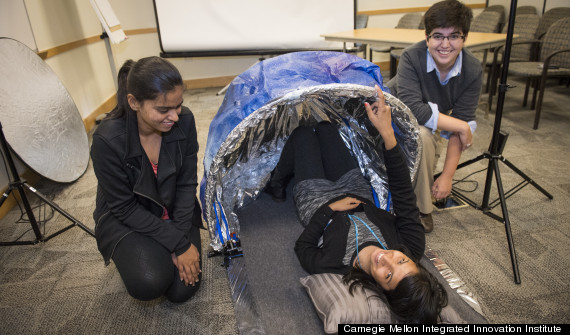If there has ever been a question of whether or not technology was transforming schools, businesses, and society the answer is now clear. The emergence of COVID-19 on the world has required people to shelter at home, keep safe social distancing, learn remotely, and work from home whenever possible. Technology tools make it possible for us to stay connected with family and friends, shop and pay bills, go to school and work, all from home. Today I am taking time to think of the innovations that have come about during this time of remote learning. I hope you will take some time to consider these ideas and add your own. This pandemic is presenting opportunities in education to reconsider how we teach and we don't want to go back to traditional face-to-face instruction without considering what worked well and what was more challenging in the online format. In this day of rapidly evolving technologies, everyone knows something and no one knows everything (
Leu, 2002, p. 328), so by collaborating we can come up with the best suggestions for teaching this fall and beyond.
 Marketoonist, Tom Fishburne Credit
Connecting with family remotely
Marketoonist, Tom Fishburne Credit
Connecting with family remotely. While we can't visit our parents, children, or grandchildren face to face, we can keep connected with FaceTime, Zoom, phone calls, letters, and other social media. Some people have grandchildren they have not yet gotten to hold in person, but they have watched them sleep, coo, and snuggle online.
Connecting with students and families remotely. Remote learning is happening daily. Many schools have Learning Management Systems (LMS) already in place including Google Classroom, Schoology, Blackboard, Canvas, and others. While teachers were using these LMSs to some extent before the pandemic, they had to quickly begin using them on a daily basis to post assignments, collect assignments and provide feedback, and connect with students. Combined with a video conference platform such as Zoom, teachers could hold virtual class lessons, class meetings, and office hours. Many teachers found connecting with students individually to be helpful to first see how they are doing, then discuss learning. We learned that social emotional needs increased for many students and families during this time, so validating the child's feelings, saying their names, and supporting parents in their new role as "teacher" became very important. Posting screencasts of lessons was a good way to support parents and students in learning.
Collaboration tools. Many technology tools that teachers used in the face-to-face classroom became important tools in the online environment as well. Students could set up a Google Folder to store their work and share it with the teacher so each document within the folder didn't need to be shared. Discussion boards such as
Padlet allowed students to share ideas about readings so they could gain insights from each other. Making Google Slides presentations interactive using
Pear Deck add-on helped students to follow along and provide input throughout so teachers could tell if they needed to clarify ideas. Because their responses are recorded, these activities could be completed as a whole class in real time, or individually as an assignment. The teacher could know either way that the student viewed the presentation and responded. The same options are available for every student response systems such as
Kahoot to engage students in real time competition or allow them to answer the questions independently using this gaming format.
Flipgrid provides a way for students to respond using video during asynchronous discussions, increasing personal contact between students and assuring that every voice is heard. Students created collaborative projects using
Google Slides and
Book Creator to tell digital stories about science, history, and literature.
Screencast-O-Matic and other screencasting tools worked well for students to give presentations and make their thinking visible.
 What worked well online?
What worked well online?
1. Many teachers noted that one-on-one meetings were very valuable using Zoom. Talking individually or with small groups provided opportunities for students and teacher to see each other's nonverbals during communication as well as hear their joys and concerns.
2. Others found that more students responded during discussions when they could post their response online because everyone could post in the time that one person could respond orally in class.
3. Students grew in confidence and competence using technology to communicate remotely, skills they will need to be college and career ready.
4. Students responded to learning by creating multimedia projects that demonstrated learning. In this atmosphere of less grading, students were able to try new ways to show their understanding in ways that went beyond worksheets, quizzes, and tests.
5. What worked well for you?
What was challenging online?
1. Most teachers missed greeting their students in person.
2. Using new technology tools, or using them in new ways, caused stress for some teachers.
3. Trying to take care of our own children while teaching from home caused anxiety for some teachers, and parents.
4. Not everyone has access to high speed internet that is always efficient. But libraries leave their wifi on even when they are not open so working from library parking lots was an option.
5. What was most difficult for you when teaching remotely?
Where do we go from here? We now have half a semester of teaching remotely under our belts. We have used new technology tools. We experimented with synchronous and asynchronous instruction. We tried new ways to connect with students, and parents. We allowed some student choice in how to respond to learning. We used a variety of ways to give feedback. We found that quiet students who would never raise their hands in the physical classroom have important ideas to share online. It's time to empower students even further to be self-regulated learners doing physical projects and sharing them virtually through pictures, video, and multimedia. We must prepare to teach our classes with both face-to-face components and online components so we can respond quickly as needs arise. Teach students the tools they will need to learn online, then begin using them face-to-face so they are ready if the pandemic returns.
This is an exciting time for growth as teachers and learners! Get some relaxation this summer, and evaluate how things went spring semester. Then plan a dynamic fall learning experience for your students! All the best!










